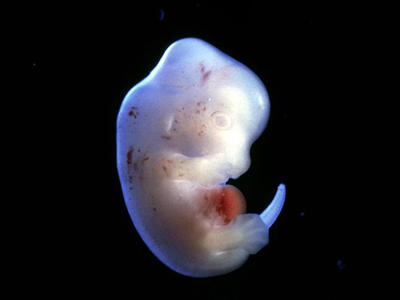
Breaking News
 Third Time's The Charm: SpaceX Starship Megarocket Blasts Off From Starbase
Third Time's The Charm: SpaceX Starship Megarocket Blasts Off From Starbase
 First Ever: Technocracy Roundtable Streaming Today
First Ever: Technocracy Roundtable Streaming Today
 Comcast Network Horror: Summer Ratings Crash 49%, Advertisers In Major Bind
Comcast Network Horror: Summer Ratings Crash 49%, Advertisers In Major Bind
Top Tech News
 Magnetic Fields Reshape the Movement of Sound Waves in a Stunning Discovery
Magnetic Fields Reshape the Movement of Sound Waves in a Stunning Discovery
 There are studies that have shown that there is a peptide that can completely regenerate nerves
There are studies that have shown that there is a peptide that can completely regenerate nerves
 Swedish startup unveils Starlink alternative - that Musk can't switch off
Swedish startup unveils Starlink alternative - that Musk can't switch off
 Video Games At 30,000 Feet? Starlink's Airline Rollout Is Making It Reality
Video Games At 30,000 Feet? Starlink's Airline Rollout Is Making It Reality
 Automating Pregnancy through Robot Surrogates
Automating Pregnancy through Robot Surrogates
 SpaceX launches Space Force's X-37B space plane on 8th mystery mission (video)
SpaceX launches Space Force's X-37B space plane on 8th mystery mission (video)
 This New Bionic Knee Is Changing the Game for Lower Leg Amputees
This New Bionic Knee Is Changing the Game for Lower Leg Amputees
 Grok 4 Vending Machine Win, Stealth Grok 4 coding Leading to Possible AGI with Grok 5
Grok 4 Vending Machine Win, Stealth Grok 4 coding Leading to Possible AGI with Grok 5
Scientists Succeed in Growing Human-Monkey Embryos

The embryos, which were derived from a macaque and then injected with human stem cells in the lab, were allowed to grow for 20 days before being destroyed.
We have a term for this type of life form: a chimera, named after the fire-breathing monster of Greek mythology that was part lion, part goat and part snake. It's hoped that part-human chimeras—essentially animal bodies with some human organs or other characteristics—might one day offer clues to help us treat human diseases, as well as providing organs to transplant to humans. But for these purposes, part-human chimeras will first have to be born, and this research takes us one step closer to that eventuality.
That's ethically controversial, because these creatures could possess an ambiguous moral status: somewhere between that of humans, which we don't tend to experiment upon, and animals, which we do. How we end up treating part-human chimeras will depend upon the moral status we assign them—a task that these latest embryonic experiments only makes more pressing.
Why make chimeras?
There are several rationales for pursuing this line of research. Human-monkey chimeras could be created to study parts of the brain, for instance, so we can better understand Alzheimer's disease. Another goal is to grow human organs for transplantation by "deleting" the relevant organ from the animal's genetic instructions, and replacing it with human stem cells to fill the developmental niche.

 CODEX 9/11
CODEX 9/11  HERE COMES THE MOTHERSHIP
HERE COMES THE MOTHERSHIP Venus Aerospace Hypersonic Engine Breakthroughs
Venus Aerospace Hypersonic Engine Breakthroughs

